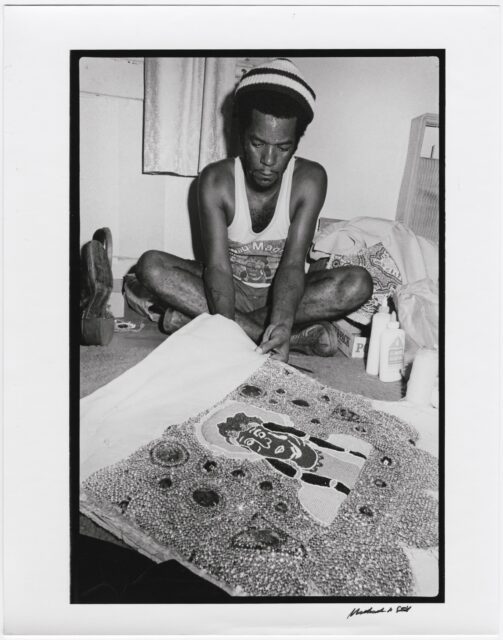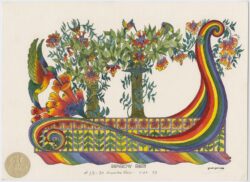The Greatest Free Show on Earth
Making Mardi Gras marches into THNOC’s exhibition enter
Published: November 29, 2021
Last Updated: February 28, 2022

The Historic New Orleans Collection
Rainbow Birds, float design for 1989 Rex parade by Stuart Auld (float designer) and Kern Studios (producer).
The exhibition surveys both the formal and informal customs of Mardi Gras and pays tribute to the artists who design and produce invitations, costumes, gowns, shoes, favors, floats, and parade throws. Visitors will encounter the old-line krewes dominated by white male elites—along with the African American, female, LGBTQ, and populist krewes that have copied and/or parodied the model established by the old-line krewes, pushing the boundaries of formal Carnival. Elsewhere in the galleries, visitors will be transported to the streets, where they’ll meet skeleton gangs, Mardi Gras Indians, Baby Dolls, marching bands, dance troupes, and walking krewes like the Jefferson City Buzzards and the Krewe de Jeanne d’Arc. Members of these homegrown groups spend months beading, sewing, glittering, painting, and rehearsing marching tunes, drumbeats, and dance steps.

Chief “Monk” Boudreaux of the Golden Eagles Mardi Gras Indian tribe, 1974. Detail. Photo by Michael P. Smith, The Historic New Orleans Collection.
The exhibition’s structure serves not only to highlight the differences between formal and informal Mardi Gras customs, but also to show that the line between the ballroom and the street is often blurred. Mardi Gras artists and makers turn inexpensive materials into extravagant creations: glass stones are transformed into crown jewels, turkey feathers are fitted together into colorful headdresses, and Styrofoam and papier-mâché are fashioned into ornate floats. Serious thought is put into the designs for these elements, drawing inspiration from history, literature, folklore, and satire. Artists work year-round, some making their living, on masterworks only on view for one day.

“Baby Dolls New Orleans 1944”; inscribed from Bradley Smith to Bill Russell. Detail. Photo by Michael P. Smith, The Historic New Orleans Collection.
The exhibition also celebrates the resilience and adaptability of New Orleans Carnival culture. Throughout the city’s history, its diverse populations have created distinctive celebratory traditions in response to community concerns, needs, and interests as well as city regulations and restrictions. Mardi Gras Indians and skeleton gangs, Anglo-American and Creole high society balls, and street parades for the masses are all examples of how the makers of Mardi Gras build traditions that fit their worlds. And, as the exhibition illustrates, Mardi Gras making doesn’t end when problems arise. When COVID-19 put a halt to traditional festivities in 2021, the New Orleans community adapted with the Krewe of House Floats. Thousands of homes across the city were decorated by homeowners or artists that they hired, some through the Krewe of Red Beans’ philanthropic project Hire a Mardi Gras Artist. Artwork from this citywide parade provide exhibition visitors with a window onto New Orleans’s indomitable creative spirit.
Making Mardi Gras showcases the Mardi Gras that happens before we’re watching, the Carnival that will wind through the city on Fat Tuesday, far from the intemperate Bourbon Street scene. Catch it before it passes.
